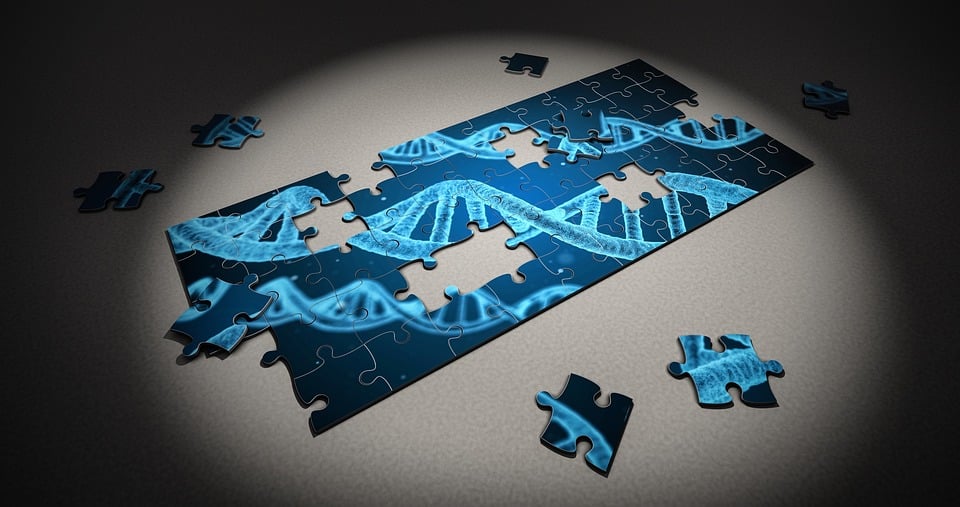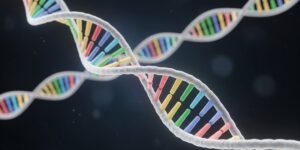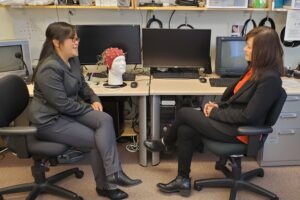
NIMS, in collaboration with Nagoya University, Gifu University, and the University of Adelaide, has unveiled a groundbreaking method for simultaneously imaging DNA and RNA within cells using harmless infrared to near-infrared light. This innovative technique, which was detailed in the journal Science Advances on October 23, 2025, holds the potential to revolutionize the early detection of cell aging and damage, significantly enhancing disease prevention strategies.
The announcement comes as researchers worldwide continue to seek more precise methods for observing cellular changes throughout their life cycles. Current imaging techniques often fall short, particularly in capturing early cellular responses or distinguishing multiple states of injury, especially in cells sensitive to ultraviolet-visible (UV-vis) light. This new method addresses these limitations, offering a universal and highly sensitive approach to monitoring cell states safely.
Background and Significance
Early detection of cellular damage that leads to aging or death is crucial for developing effective therapeutic strategies for a wide range of diseases. Traditional imaging methods have struggled to provide the necessary sensitivity and safety, often resulting in delayed diagnoses and an incomplete understanding of cellular fate following treatment. The need for a safe, precise imaging method has been a pressing concern in the scientific community.
This development follows years of research into safer imaging techniques. The newly developed method employs harmless infrared to near-infrared excitation light, which allows for the safe monitoring of complete cell states without the risks associated with UV-vis light exposure. This advancement represents a significant leap forward in non-invasive cellular diagnostics.
Key Findings and Methodology
The research team successfully visualized both DNA and RNA inside living cells by using two types of harmless excitation light and fluorescent dye probes known as N-heteroacene dyes. These dyes bind differently to DNA and RNA, enabling the simultaneous imaging of both nucleic acids. This dual imaging capability is particularly noteworthy for its ability to assess sustained DNA damage and predict early stages of cell damage and aging through RNA imaging.
The study revealed that RNA imaging provides higher sensitivity for predicting early stages of cell damage and aging.
By enabling the precise detection of all four stages of cell death, this approach surpasses the limitations of current imaging systems. It opens new possibilities for ultra-early detection of cellular damage and aging, non-toxic live-cell diagnostics, and high-throughput drug screening workflows.
Future Implications and Applications
Looking ahead, the research team plans to apply this method to living organisms in future studies. Their goal is to establish techniques for early disease detection, cellular stress monitoring, and precision medical strategies. The potential applications of this technology are vast, ranging from determining a “pre-disease” state to enhancing personalized medicine approaches.
According to sources involved in the study, the ability to observe cellular changes at such an early stage could transform how diseases are diagnosed and treated. By identifying cellular stress and damage before symptoms manifest, healthcare providers could intervene earlier, potentially preventing the progression of various diseases.
Expert Opinions and Historical Context
Experts in the field of cellular biology have hailed this development as a major breakthrough. Dr. Emily Chen, a leading researcher in cellular imaging, commented, “This method represents a paradigm shift in how we approach cellular diagnostics. The ability to image DNA and RNA simultaneously with minimal harm to cells is a game-changer.”
Historically, the quest for safer and more effective imaging techniques has been a long-standing challenge. Previous attempts to improve imaging safety and sensitivity often involved trade-offs that limited their practical applications. This new method, however, appears to overcome these hurdles, offering a comprehensive solution that could set new standards in the field.
“The ability to image DNA and RNA simultaneously with minimal harm to cells is a game-changer.” – Dr. Emily Chen
Meanwhile, the broader scientific community is closely watching the progress of this research, eager to see how it might be integrated into existing diagnostic frameworks and what new insights it could provide into cellular processes.
As the team continues to refine their technique and explore its applications, the potential for this technology to impact medical diagnostics and treatment strategies remains immense. With further development, it could lead to more personalized and proactive healthcare, ultimately improving patient outcomes and reducing healthcare costs.
The move represents a significant advancement in the field of cellular imaging, promising to reshape our understanding of cellular health and disease.







